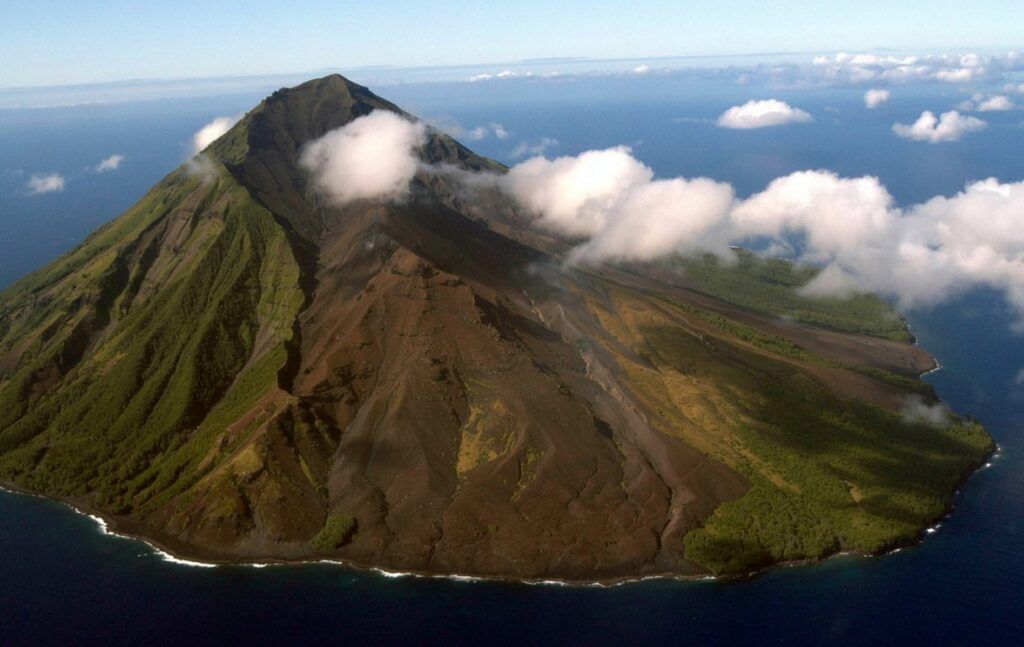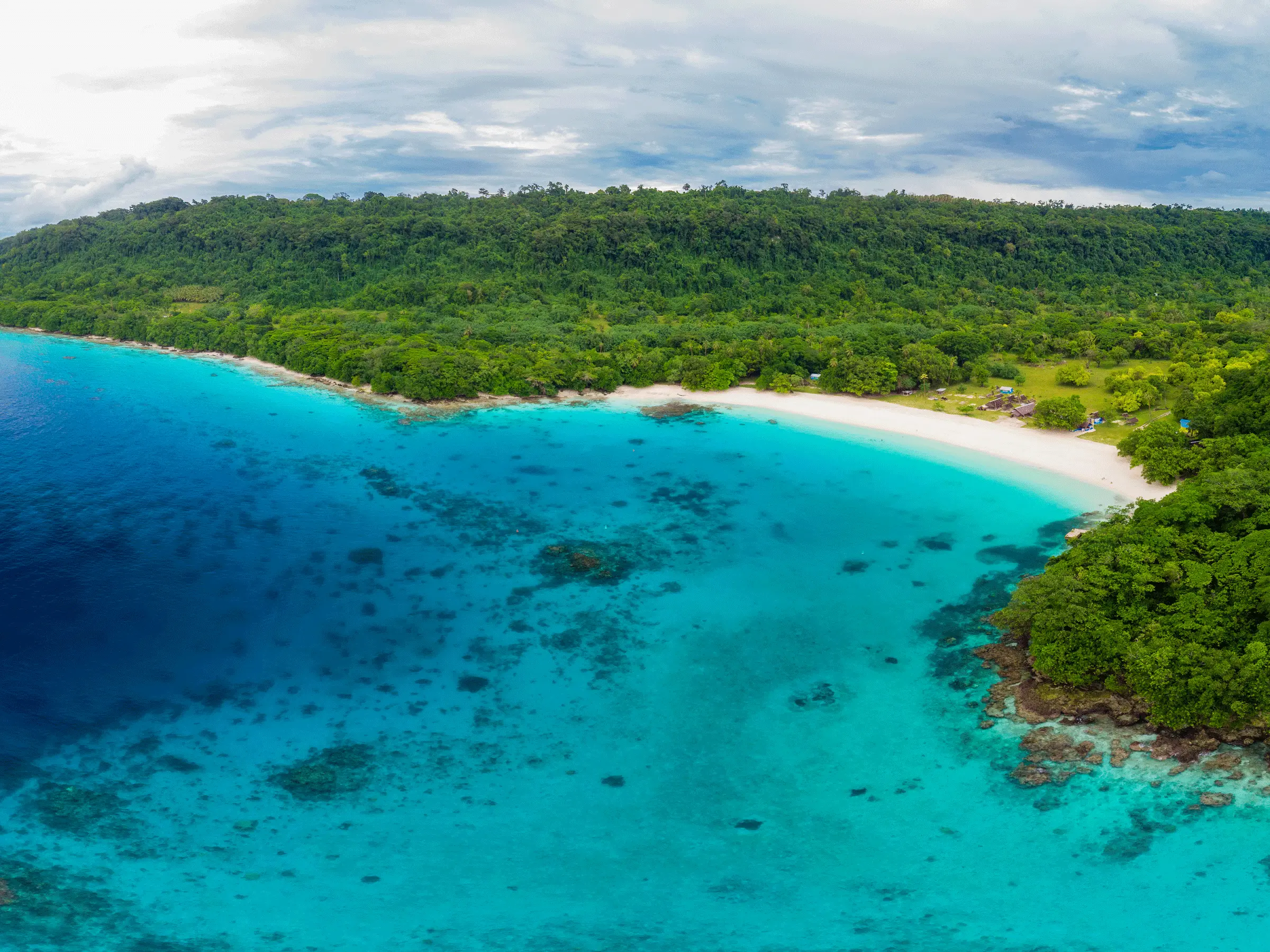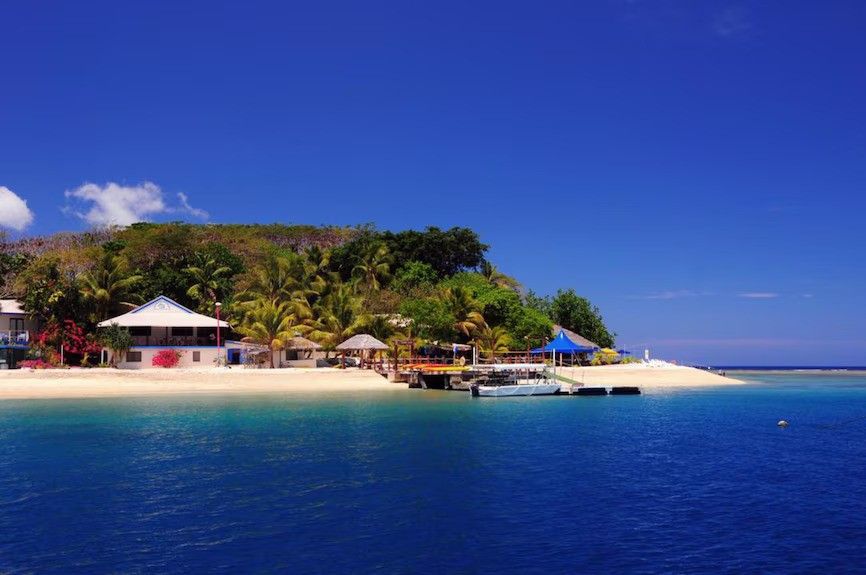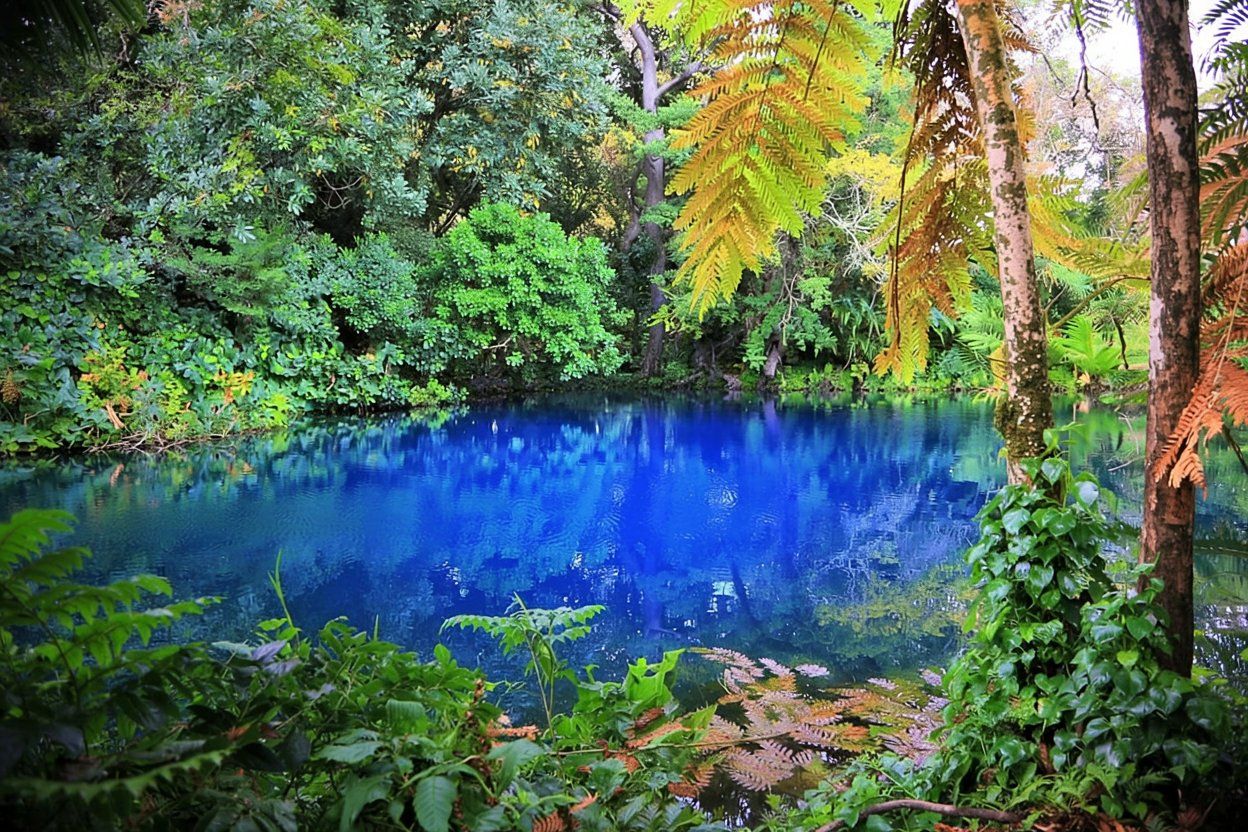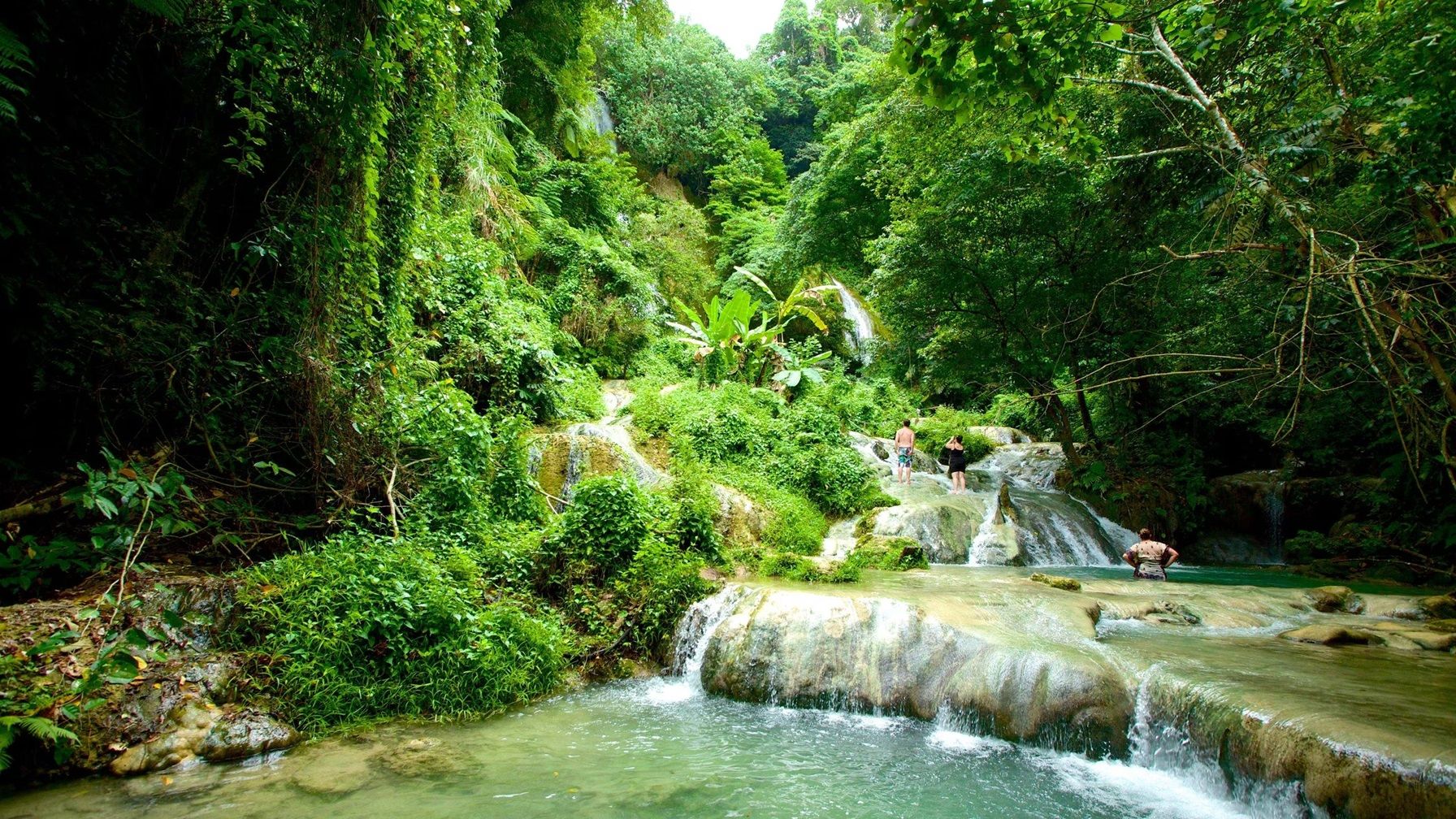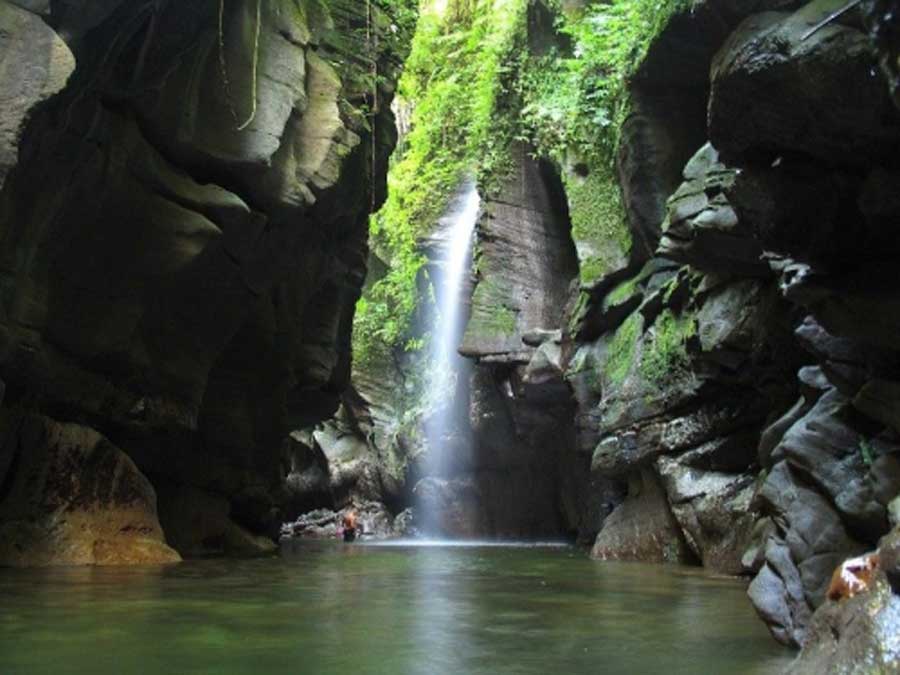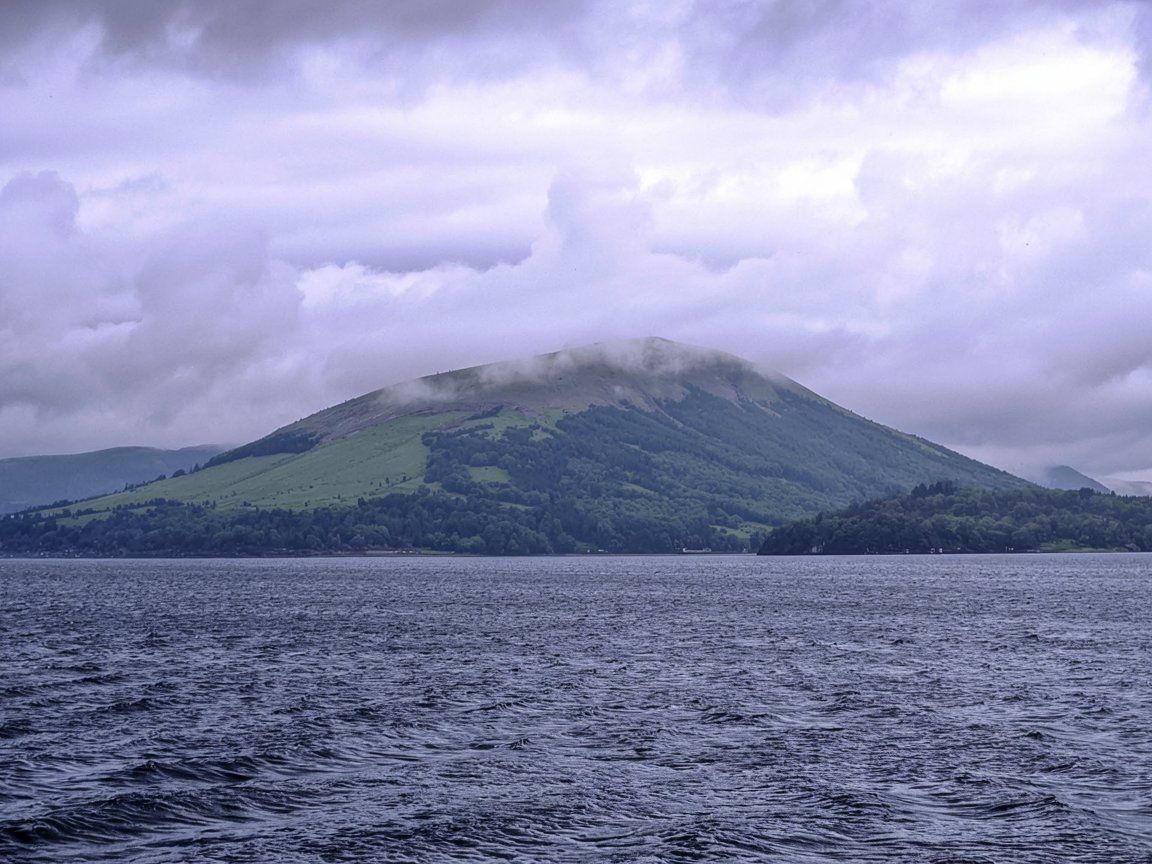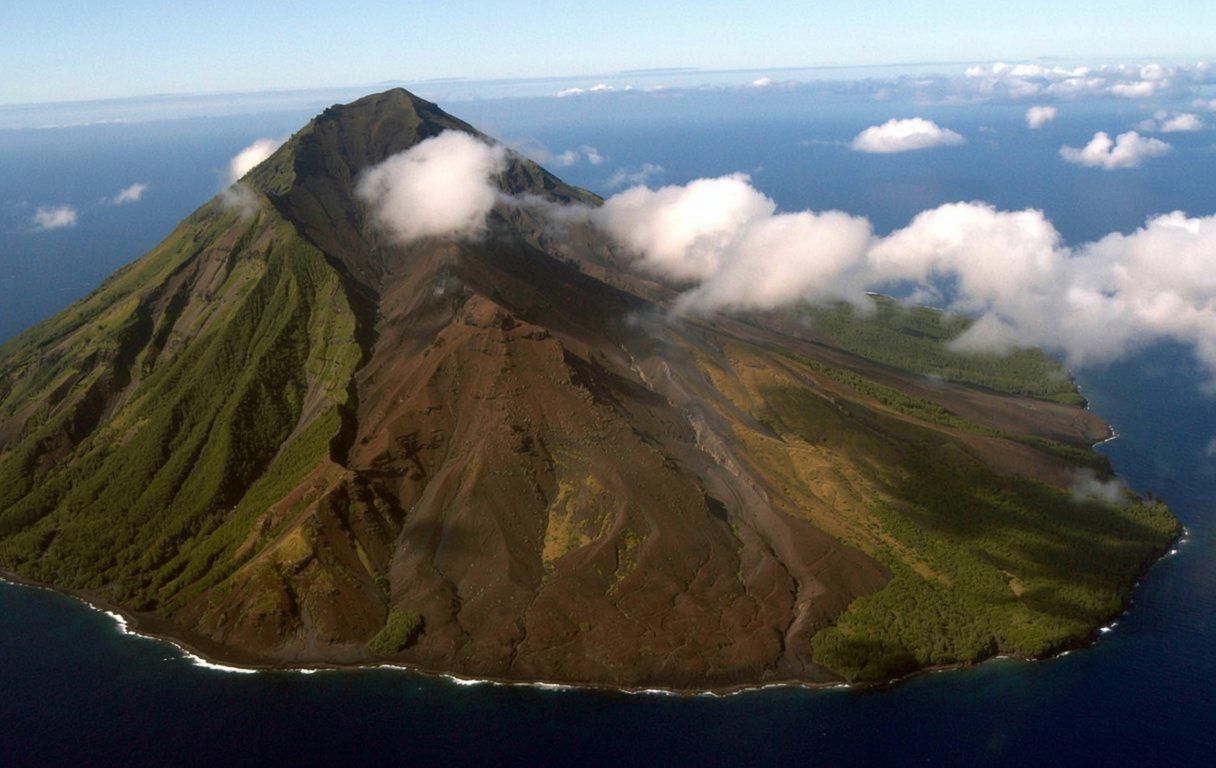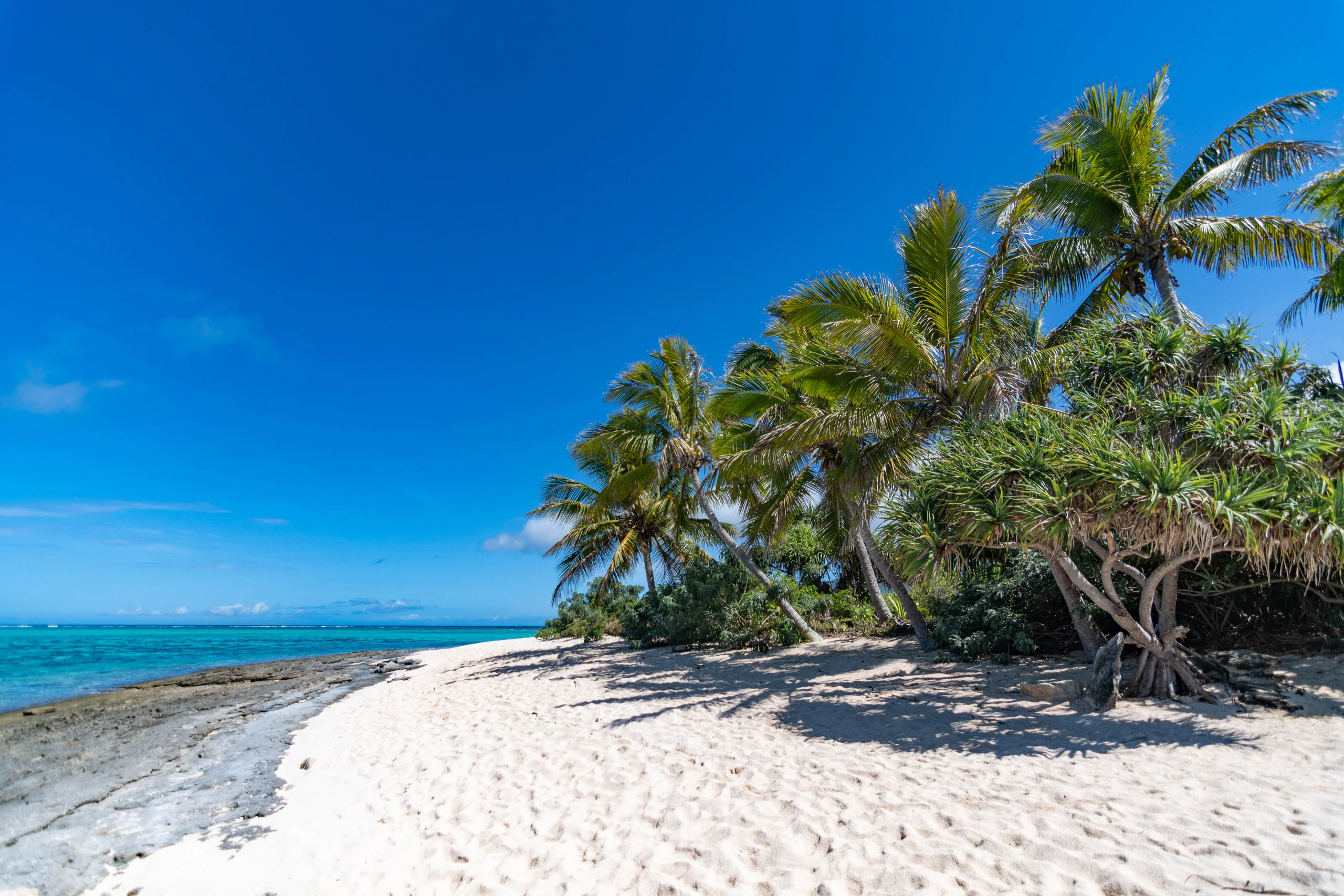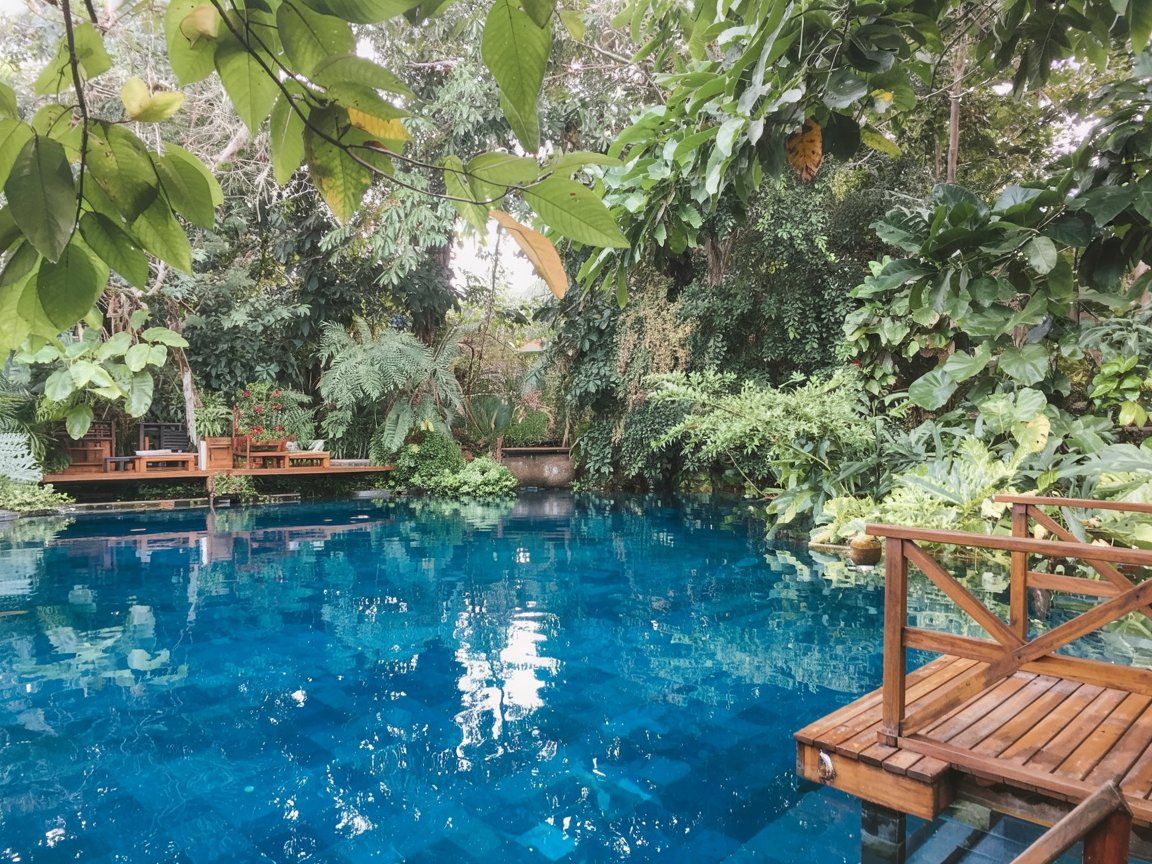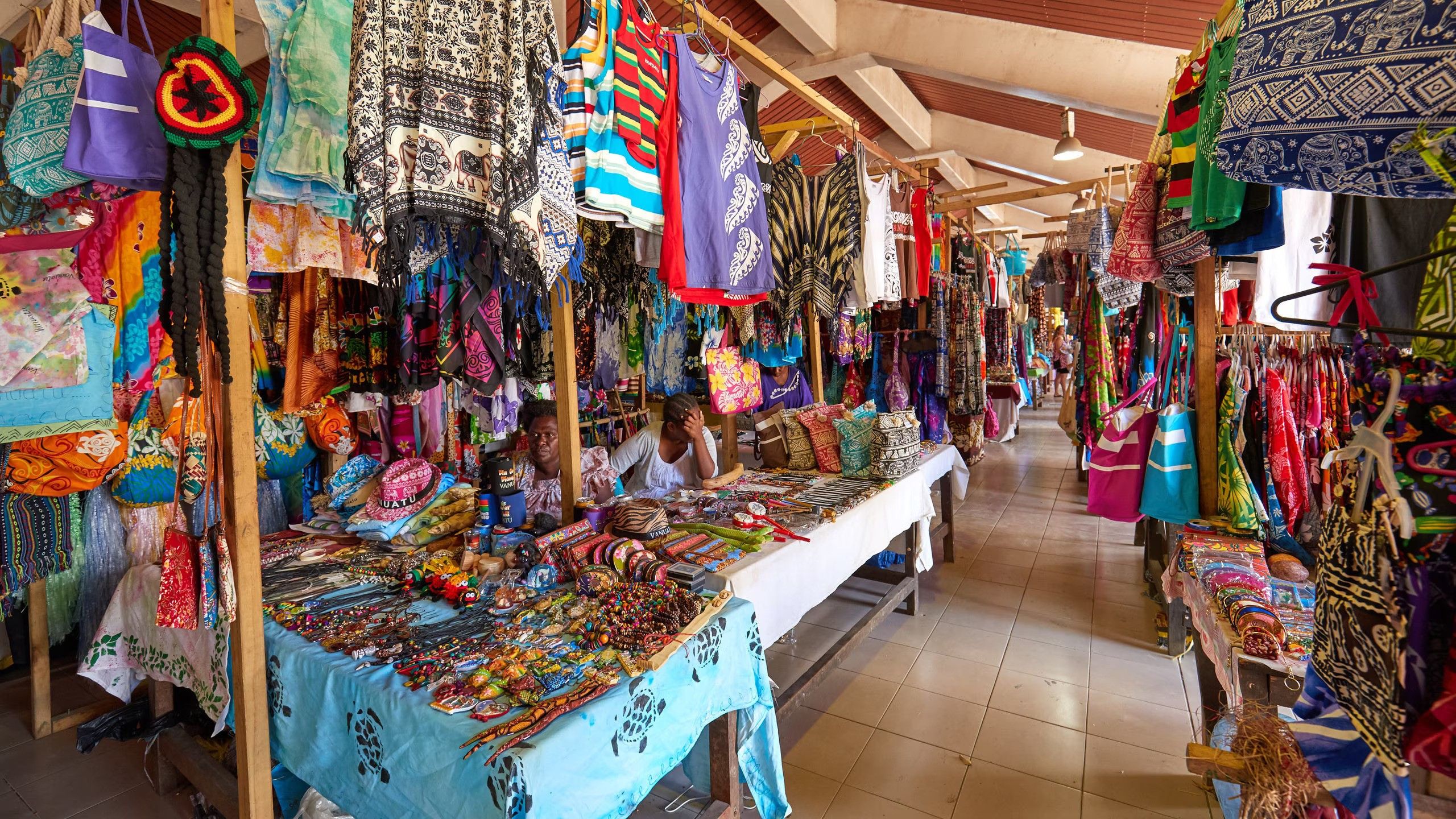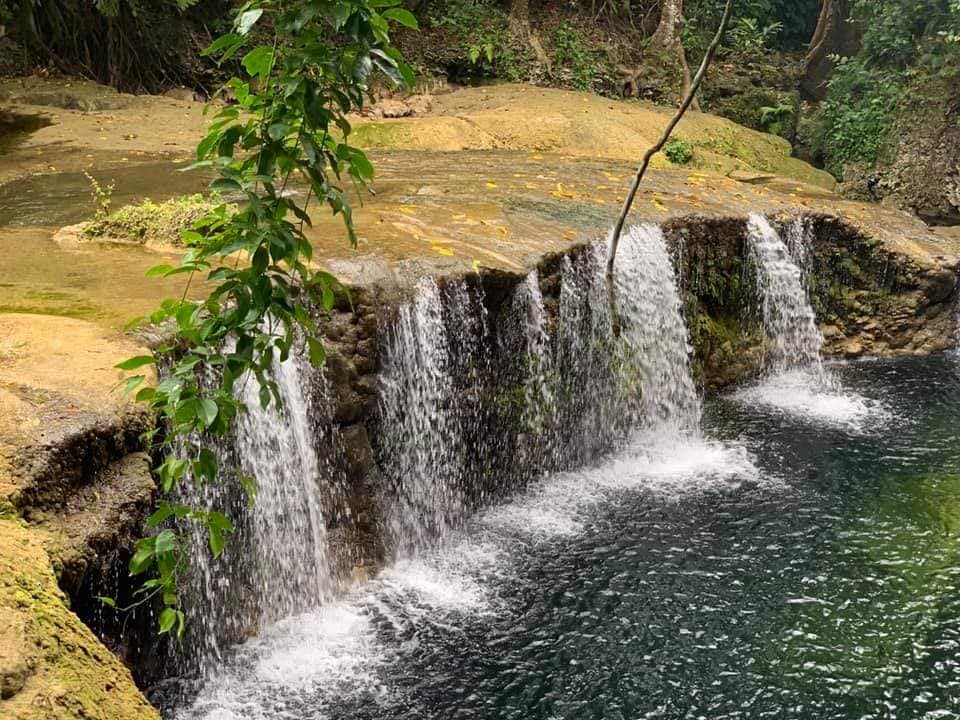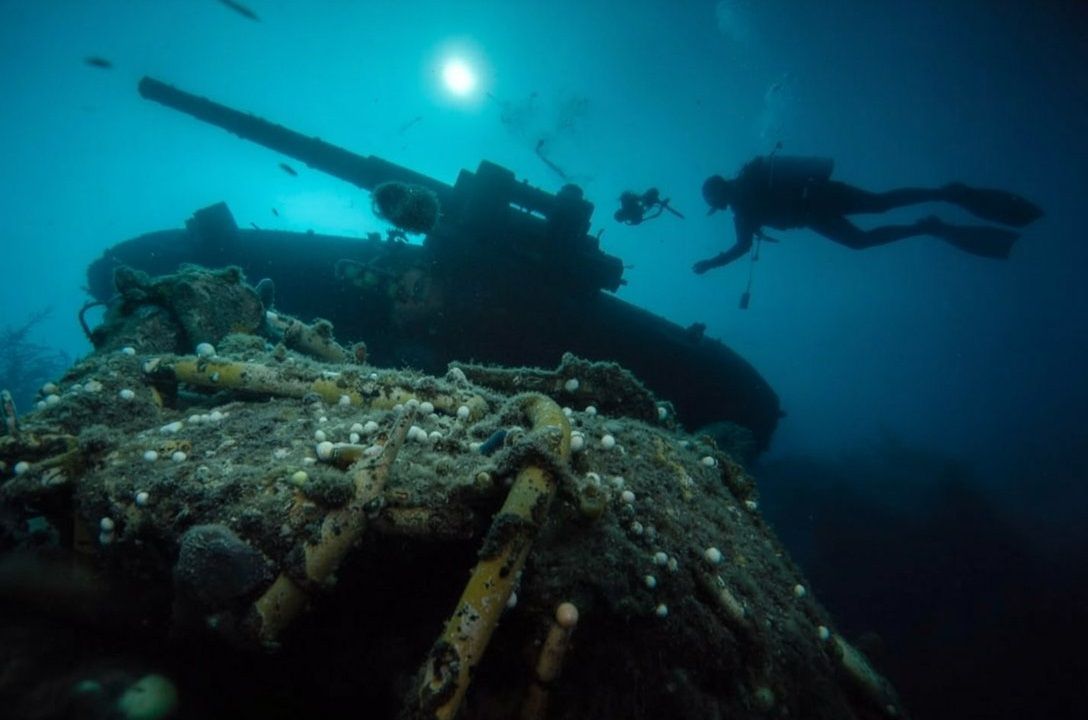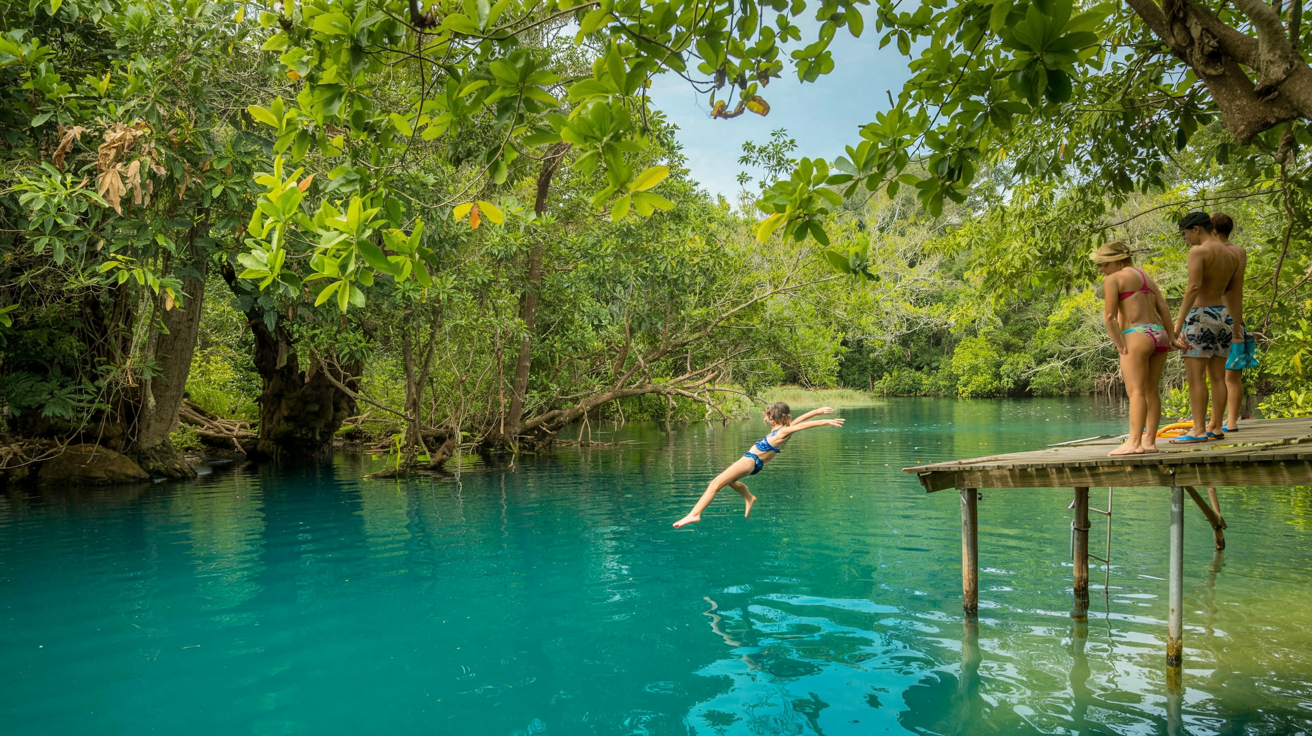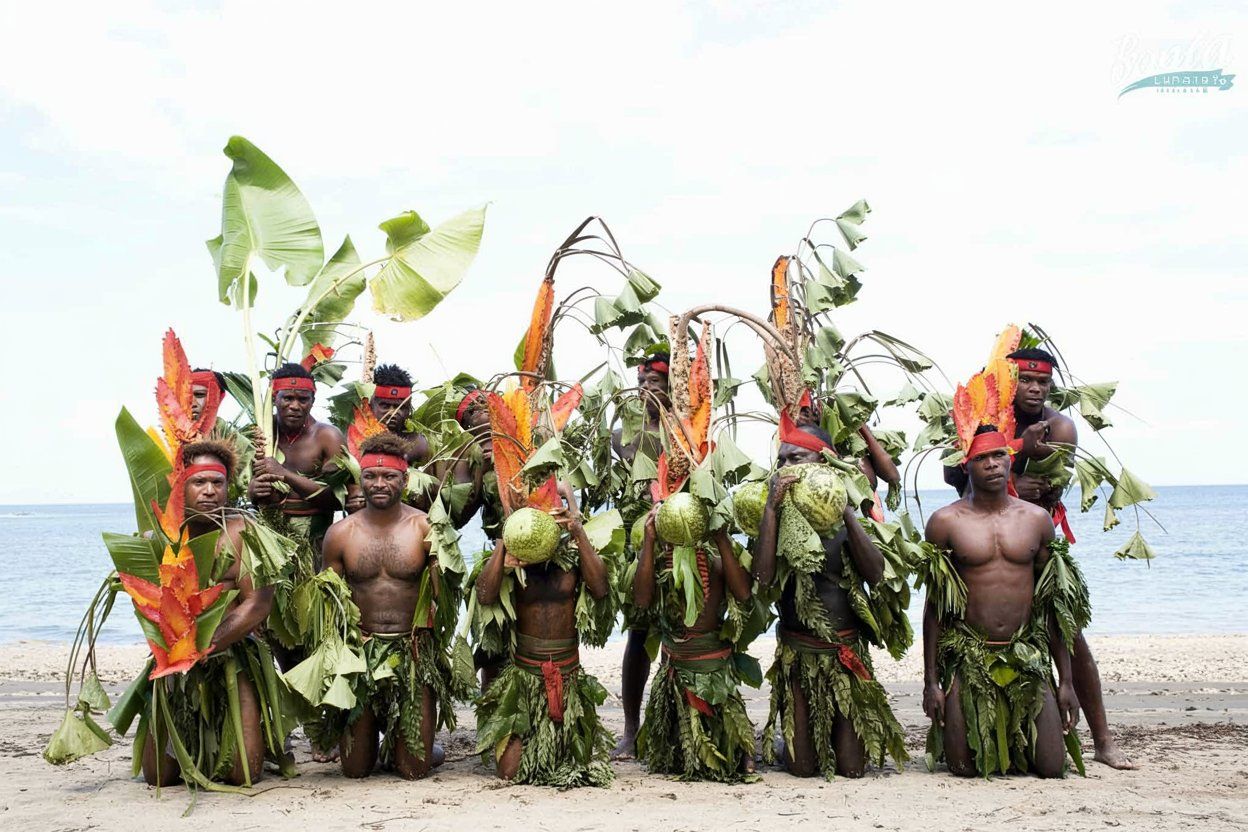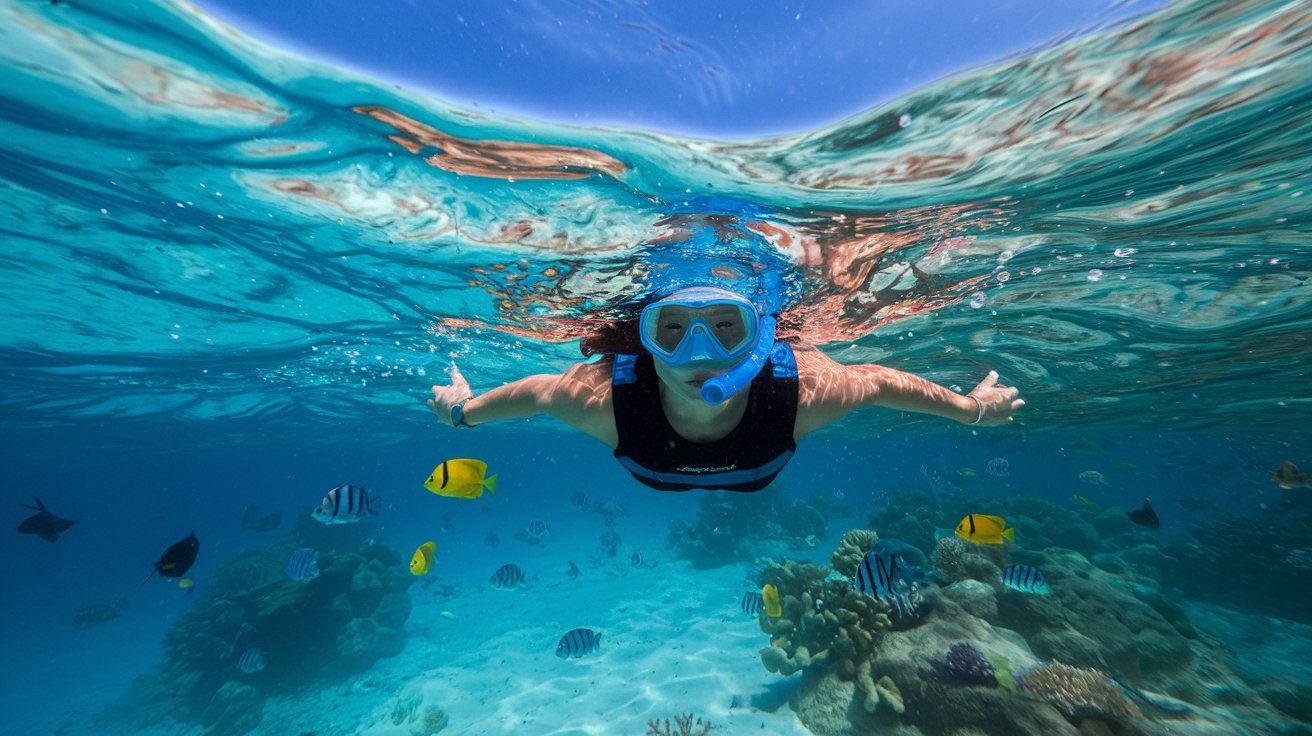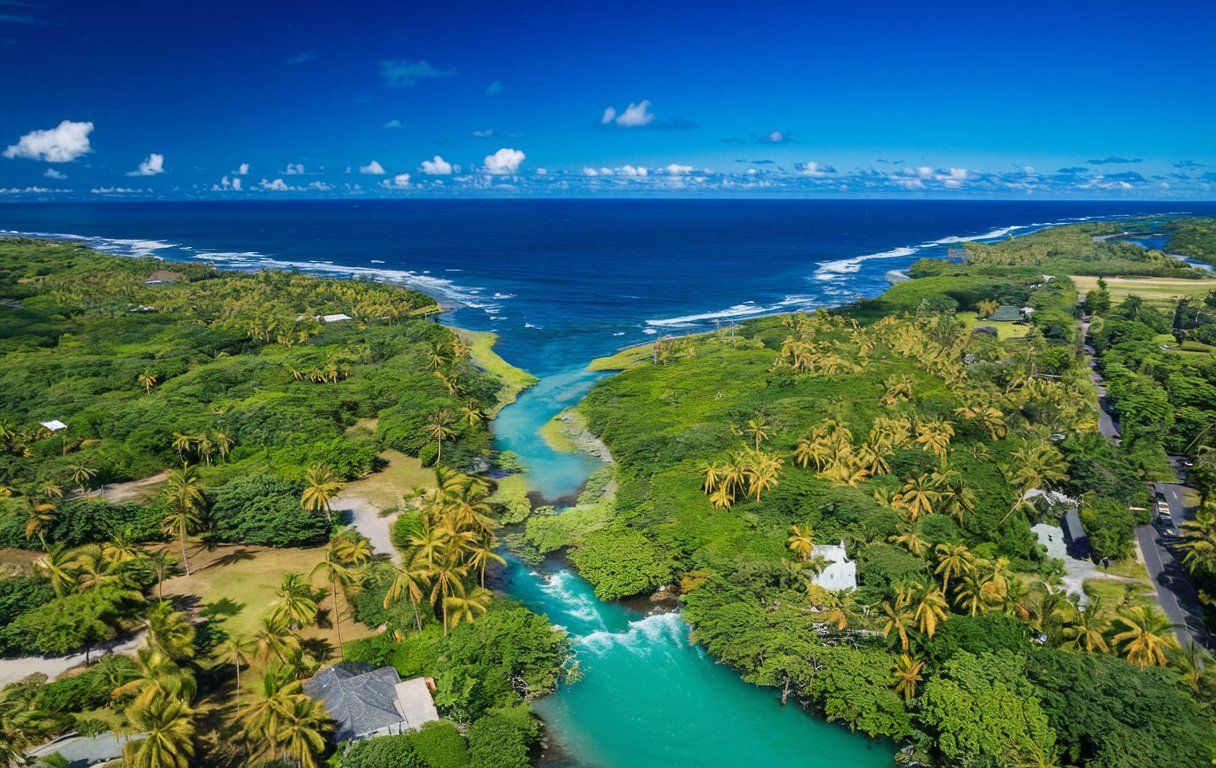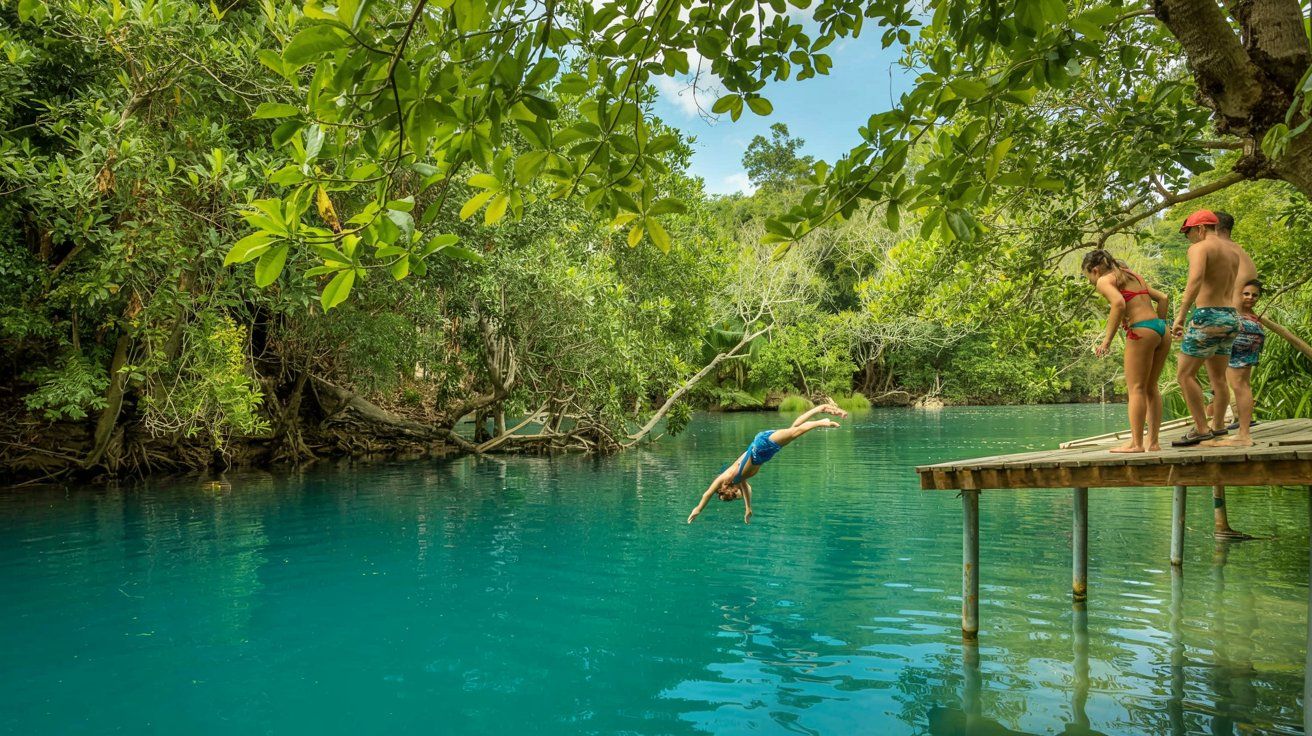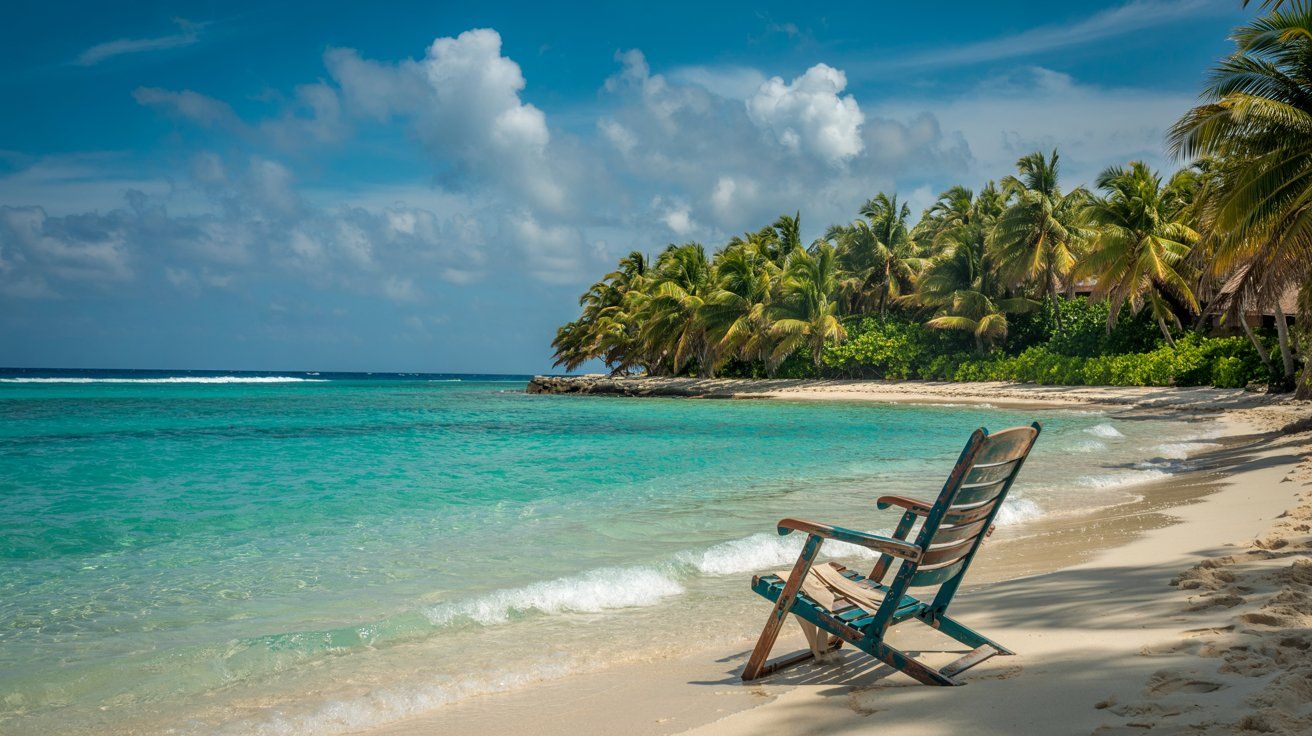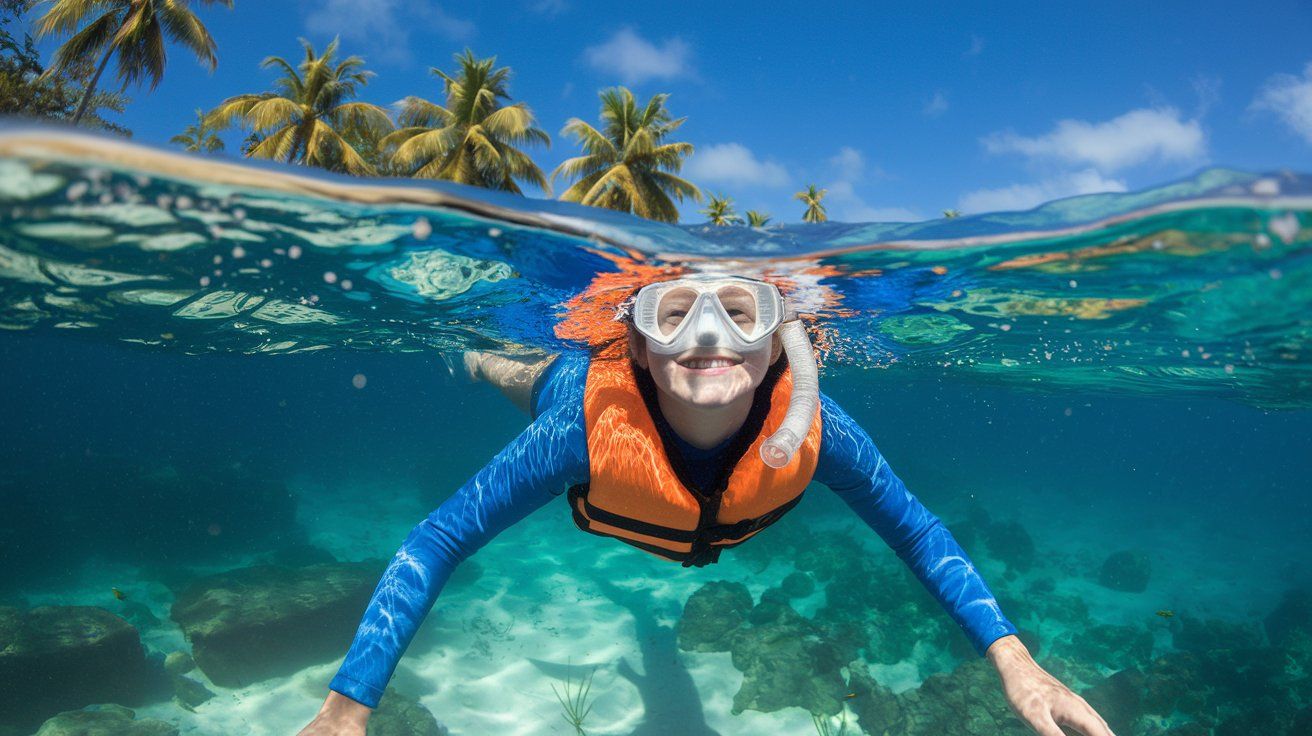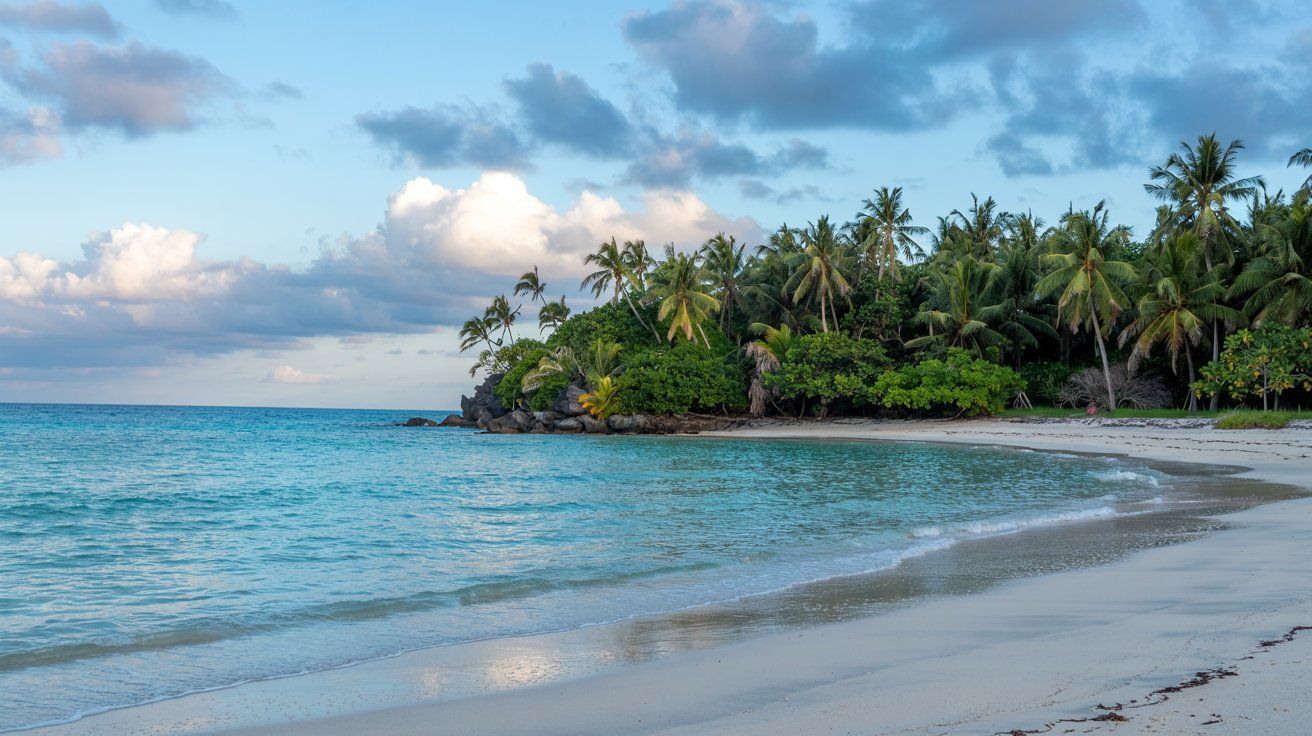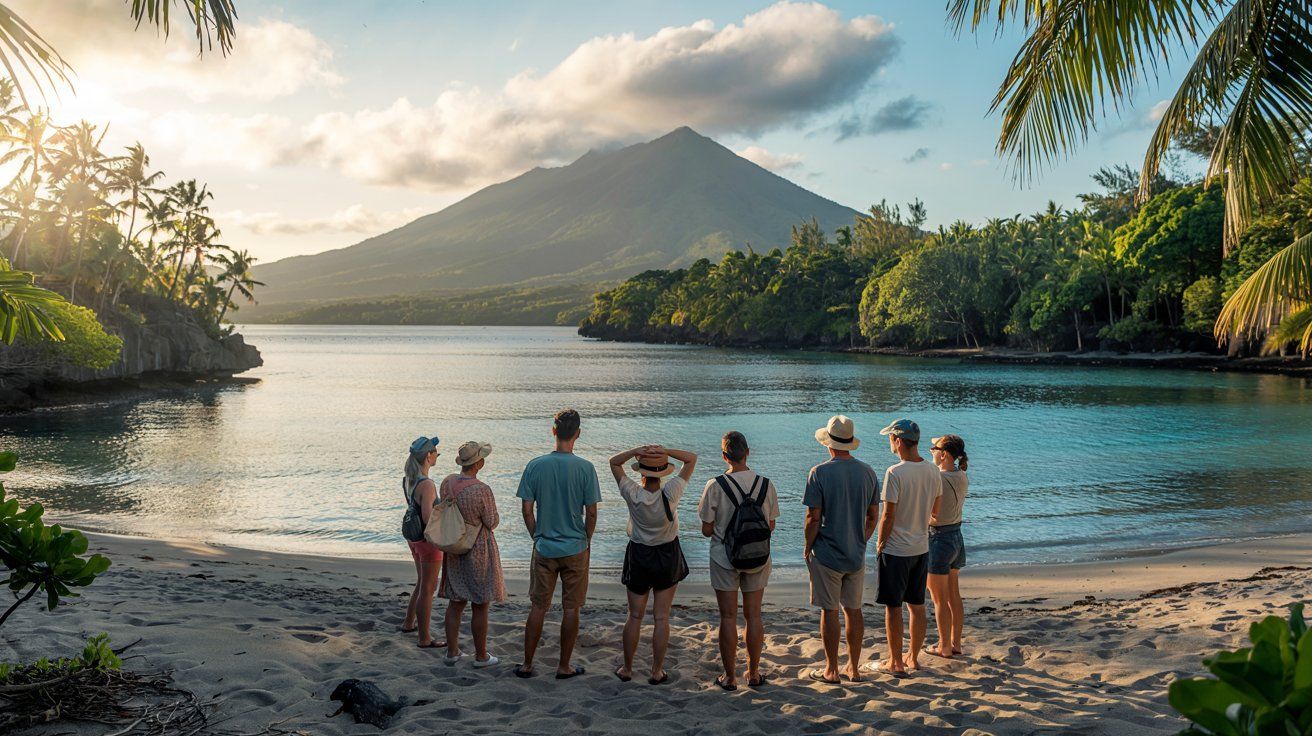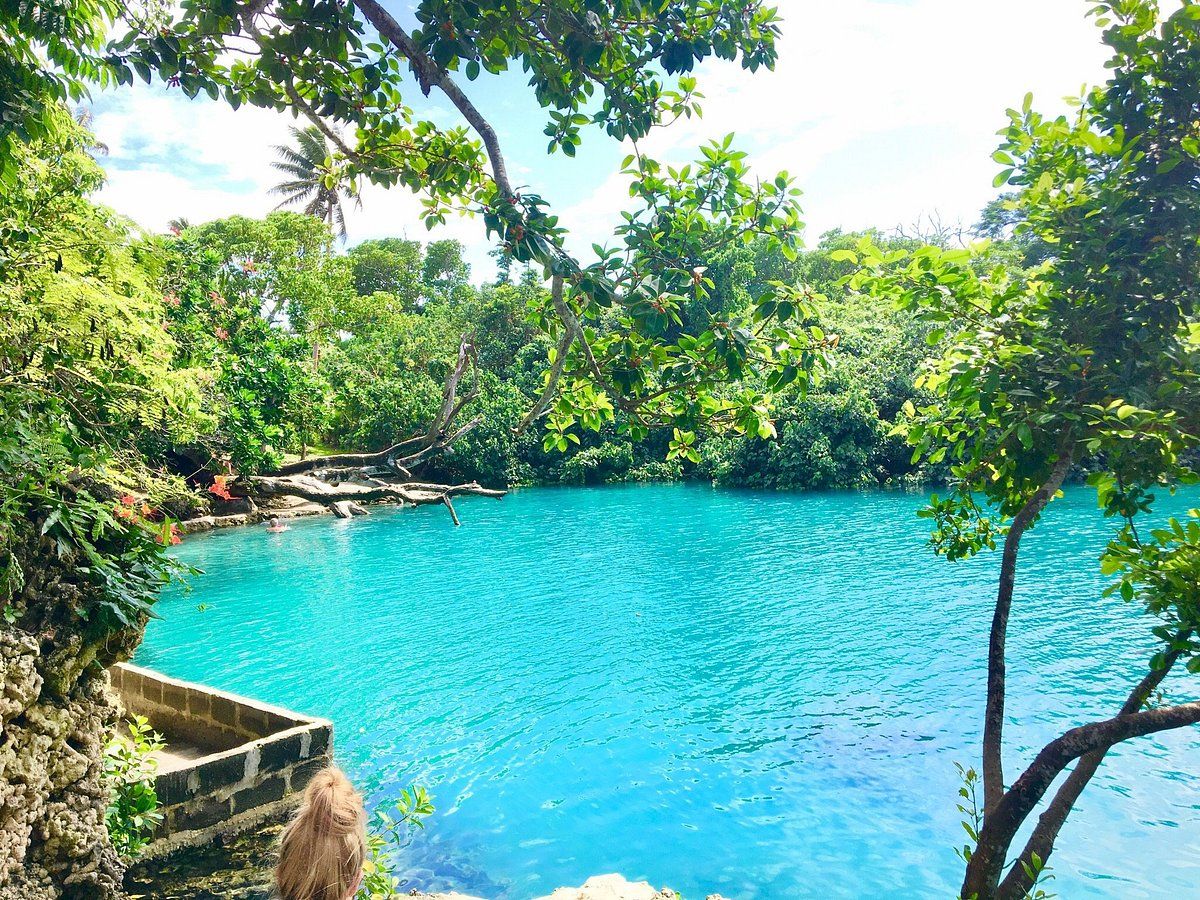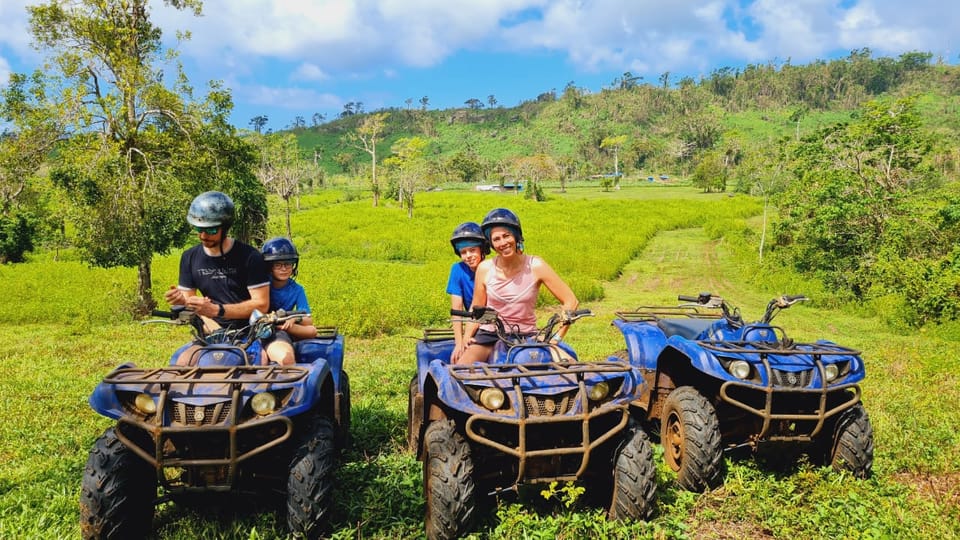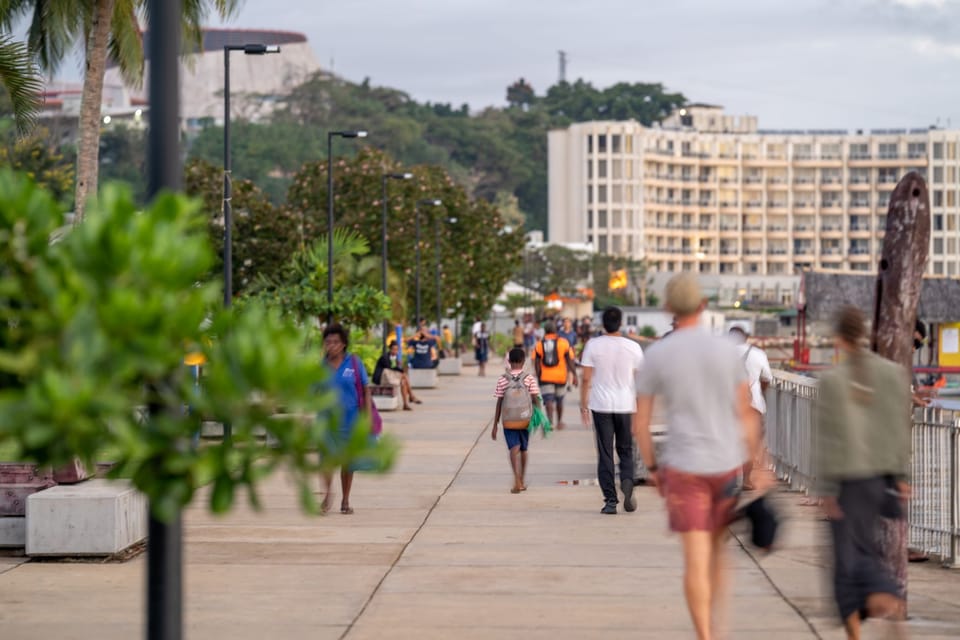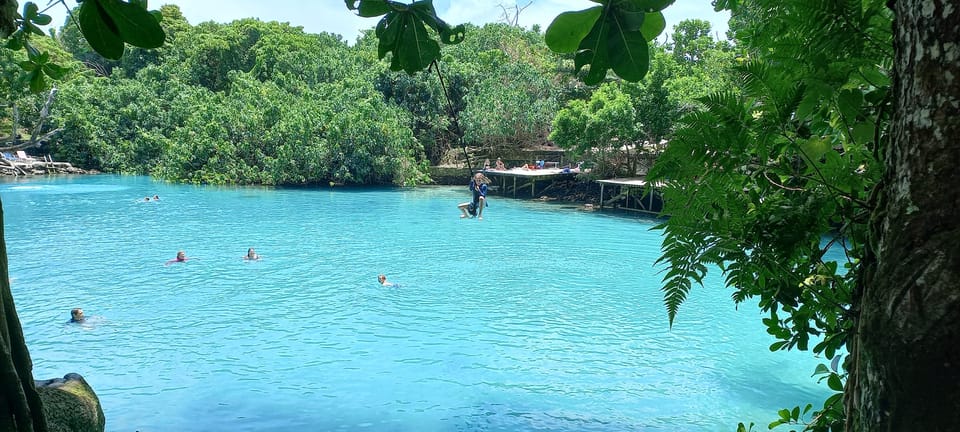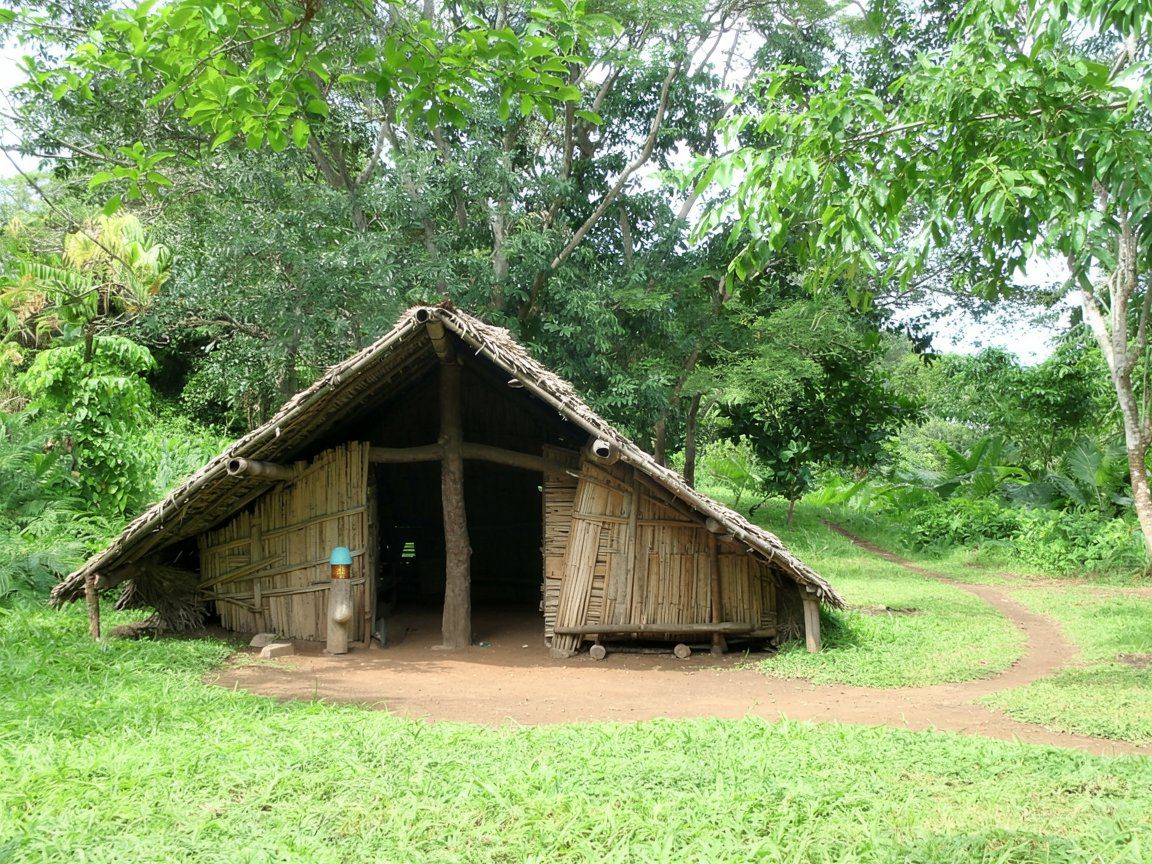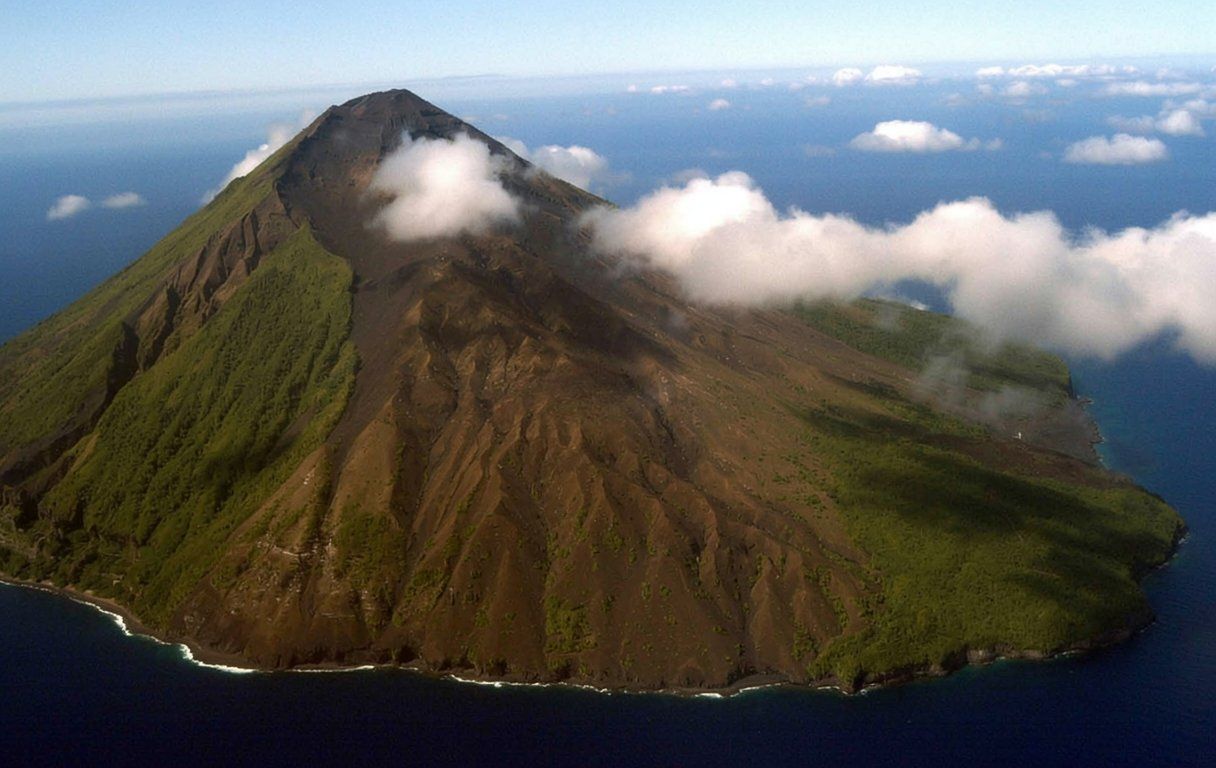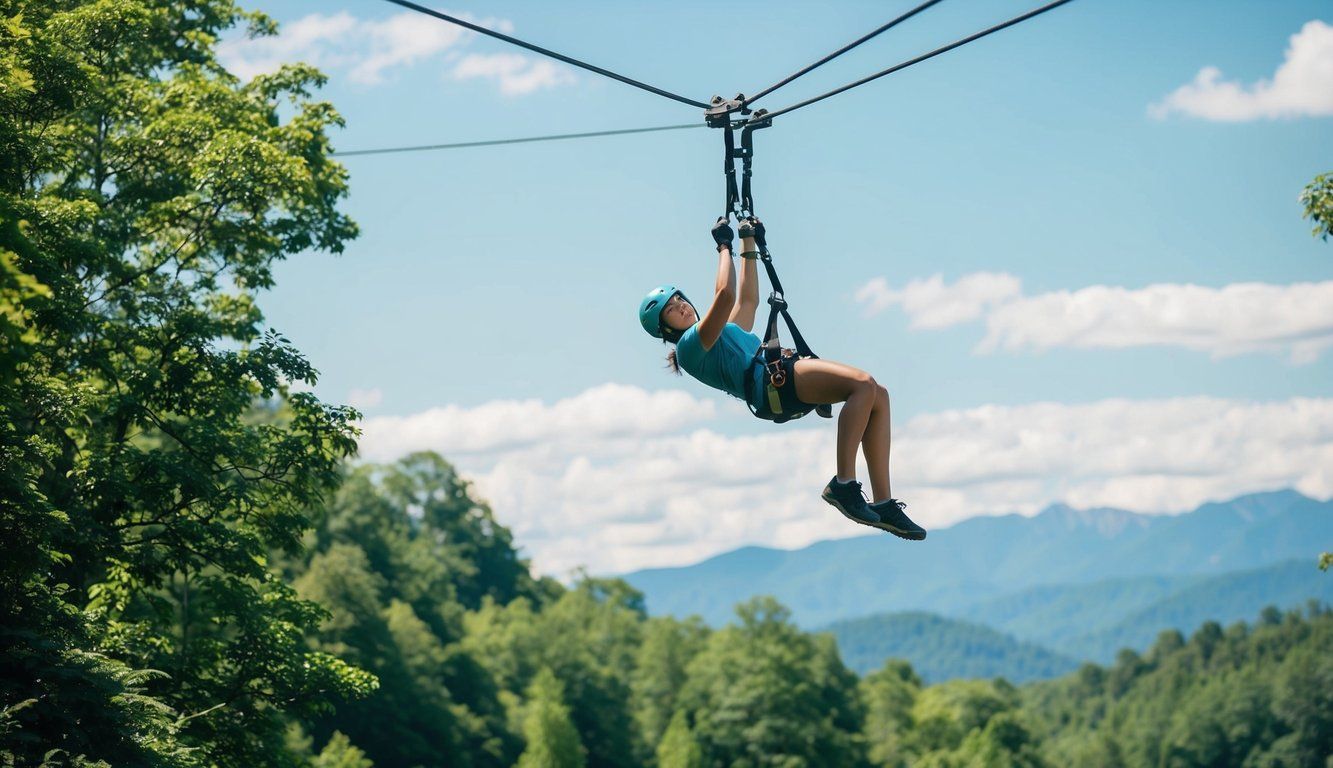Mount Yasur stands as one of the most accessible active volcanoes in the world, located on Tanna Island in Vanuatu. This spectacular natural wonder has been erupting continuously for at least 800 years, earning it the nickname “Lighthouse of the Pacific.” Visitors can safely approach the crater’s edge with local guides to witness the thrilling Strombolian explosions that occur multiple times per hour.
The volcano holds deep spiritual significance for the indigenous people of Tanna Island, who regard it as a powerful entity. Since its first documented eruption in 1774, Mount Yasur has maintained consistent activity, making it a reliable destination for travelers seeking to experience the raw power of nature. The regular ash and gas plumes create a dramatic scene against the South Pacific sky.
Get a discount of 15% to 70% on accommodation in Vanuatu! Look for deals here:
Vanuatu Hotels, Apartments, B&Bs
Travelers to Mount Yasur can expect a truly unforgettable experience as they stand at the summit watching molten lava burst into the air. The journey to the volcano involves a rugged drive across Tanna Island’s volcanic landscape, adding to the adventure. Despite its constant eruptions, tours to the summit are generally considered safe, though activity levels are monitored daily.
Geological Significance
Mount Yasur’s unique geological properties make it one of the most scientifically valuable active volcanoes in the Pacific region. This continuously erupting natural wonder offers researchers insights into volcanic behavior and tectonic processes.
Formation and Location
Mount Yasur formed due to the interaction between major tectonic plates in the Pacific. The eastward-moving Indo-Australian Plate subducts beneath the westward-moving Pacific Plate, creating the conditions for volcanic activity. This subduction zone generates the magma that feeds Mount Yasur.
The volcano sits on Tanna, one of the southern islands in the Vanuatu archipelago. Yasur is part of the “Ring of Fire,” a horseshoe-shaped belt of volcanoes surrounding much of the Pacific Ocean.
Geologists estimate Yasur has been continuously active for approximately 800 years, though no recorded historic eruptions exist in the written record. Evidence suggests at least five major eruptions occurred during the past 10,000 years.
Volcanic Features
Mount Yasur is classified as a stratovolcano (also known as a composite volcano), built from alternating layers of hardened lava, tephra, and volcanic ash. The volcano reaches a modest height of 361 meters (1,184 feet) above sea level.
Its most distinctive feature is the active crater at its summit. This crater contains multiple vents that regularly expel molten lava, gas, and ash. The surrounding landscape includes an ash plain, formed by centuries of volcanic deposits.
Yasur’s relatively accessible crater allows scientists to study ongoing volcanic processes safely. The volcano’s persistent activity provides opportunities to monitor gas emissions, lava composition, and eruption patterns.
Types of Eruptions
Mount Yasur primarily experiences Strombolian eruptions, characterized by moderately explosive bursts that eject incandescent lava fragments. These eruptions typically occur at regular intervals ranging from minutes to hours.
During these events, the volcano shoots lava bombs and lapilli (small stones) into the air, creating spectacular nighttime displays as the glowing material arcs through the sky. Gas emissions, primarily sulfur dioxide and water vapor, continuously vent from the crater.
The intensity of Yasur’s activity fluctuates between levels 0-4 on the volcanic alert scale. Even during periods of heightened activity, the eruptions remain relatively predictable in their pattern, though unexpected stronger explosions can occur. This consistent behavior pattern has made Yasur valuable for studying long-term volcanic cycles.
Historical Context
Mount Yasur has a rich history spanning centuries of volcanic activity and cultural significance. This active volcano has shaped both the physical landscape of Tanna Island and the traditions of local communities.
Discovery by the Western World
Captain James Cook’s expedition in 1774 marked the first documented European encounter with Mount Yasur. As his ship approached Tanna Island in Vanuatu, the glow from the volcano’s eruptions served as a natural beacon in the darkness. This luminous display earned Mount Yasur the nickname “Lighthouse of the Pacific.”
Cook was drawn to investigate the source of this mysterious light, leading to the first Western documentation of the volcano. His accounts described the frequent eruptions and impressive displays of volcanic activity.
The discovery of Mount Yasur helped establish it as a significant geographical landmark in European navigation through the Pacific islands during the 18th century.
Cultural Significance
Mount Yasur holds profound importance for the Indigenous people of Tanna Island. For local communities, the volcano is not merely a geological feature but a sacred entity woven into their spiritual beliefs and cultural identity.
The volcano is central to many traditional ceremonies and rituals. Local legends often attribute special powers to Mount Yasur, and some communities believe it houses ancestral spirits.
The mountain’s consistent activity has influenced local cultural practices for generations. Many traditional stories explain the volcano’s behavior and establish protocols for safely living near such a powerful natural force.
Despite modernization, respect for Mount Yasur continues to shape community life on Tanna Island, with certain areas considered taboo and specific rituals performed to maintain harmony with the volcano.
Historic Eruptions
Mount Yasur has maintained an extraordinary record of continuous eruption for approximately 800 years. This makes it one of the world’s most consistently active volcanoes, with multiple eruptions typically occurring every hour.
Geological evidence reveals at least five major eruption phases during the past 10,000 years. The volcano primarily displays Strombolian-style eruptions, characterized by regular explosions that launch incandescent lava fragments into the air alongside ash and gas plumes.
While no historic eruptions have caused catastrophic damage, the volcano’s activity levels fluctuate between periods of greater and lesser intensity. These variations in activity have been documented since Captain Cook’s time.
Local communities have developed traditional warning systems based on centuries of observation, allowing them to predict dangerous periods of increased volcanic activity.
Visiting Mount Yasur
Mount Yasur offers a thrilling opportunity to witness one of the world’s most accessible active volcanoes up close. Visitors can observe regular eruptions from safe viewing points around the crater rim, experiencing the raw power of nature in action.
Travel and Access
Mount Yasur is located on Tanna Island in Vanuatu, approximately 40 kilometers from the island’s main town of Lenakel. Most visitors arrive via a 40-minute flight from Port Vila to Tanna’s Whitegrass Airport. From there, a 4WD vehicle is necessary to reach the volcano, as the roads become increasingly rough near the mountain.
Tour operators offer daily excursions to the volcano, typically including transportation and guide services. The journey takes about 1.5 hours from most accommodations on the island.
An entrance fee (approximately 9,750 vatu or $85 USD) is required to access the volcano site. This fee helps maintain facilities and supports the local communities who consider Mount Yasur sacred.
Safety and Viewing
Safety is paramount when visiting this continuously erupting volcano. Authorities monitor activity levels daily, rating them from 0 (least active) to 4 (most dangerous). Access may be restricted during periods of heightened activity.
Visitors must stay with guides and remain on designated paths. The best viewing times are early morning or late afternoon to evening, when the glowing lava becomes more visible against the sky.
The crater rim offers several viewing platforms positioned at safe distances from the main eruption areas. Sturdy footwear is essential, as the volcanic terrain is rocky and uneven.
Guides provide hard hats for protection from potential falling debris. It’s advisable to bring warm clothing as temperatures can drop significantly after sunset.
Tourism and Amenities
Basic facilities are available at the volcano entrance, including restrooms and a small visitor center with information about Mount Yasur’s geological significance. Several tour companies offer packages that include transport, guides, and sometimes meals.
Photography enthusiasts will find special opportunities at Mount Yasur, though volcanic ash can damage camera equipment. Some operators provide protective gear for cameras.
Nearby accommodations range from basic guesthouses to more upscale eco-lodges. Many visitors choose to stay overnight on Tanna to experience both daytime and nighttime views of the eruptions.
Local communities have developed cultural experiences around volcano visits, including traditional ceremonies and feasts. These provide additional context about the spiritual significance of Mount Yasur to the people of Tanna Island.
Conservation Efforts
Mount Yasur in Vanuatu faces unique conservation challenges due to its status as an active volcano that has been erupting continuously for over 800 years. The volcano’s popularity as a tourist destination has created a need to balance visitor access with environmental protection.
Local authorities in Vanuatu have implemented visitor management systems to control tourism impact on the volcanic area. These include designated viewing platforms and mandatory guides who ensure visitors stay on marked paths to minimize erosion.
The Vanuatu government works with scientific organizations to monitor volcanic activity for both safety and conservation purposes. Regular assessments help protect the surrounding ecosystem while maintaining this natural wonder.
Key Conservation Initiatives:
- Restricted access during high activity periods
- Waste management programs to keep the volcano area clean
- Local community involvement in preservation efforts
- Educational programs about volcanic ecosystems
Traditional landowners play a crucial role in conservation as they maintain cultural connections to Mount Yasur. Their knowledge helps inform sustainable practices that respect both the natural environment and spiritual significance of the volcano.
Scientists study Yasur’s impact on surrounding plant and animal life to better understand how volcanic ecosystems adapt to constant eruptions. This research helps develop appropriate conservation strategies for this unique environment.
Research and Monitoring
Mount Yasur on Tanna Island has become an important site for volcanic research. Scientists study its frequent Strombolian explosions to better understand volcanic behavior and predict eruptions.
Local authorities work with international volcanologists to monitor Yasur’s activity. They use seismic equipment to track underground movements and gas analyzers to measure emissions from the crater.
The Vanuatu Meteorology and Geohazards Department maintains a permanent monitoring station near the volcano. This helps them establish safety protocols for both locals and tourists visiting the site.
Researchers have documented Yasur’s consistent eruption patterns for decades. This has helped create a valuable database of volcanic activity spanning centuries, starting with Captain James Cook’s observations in 1774.
The volcano’s accessibility makes it an ideal natural laboratory. Students and scientists from around the world visit Yasur to study its nearly constant eruptions and unique features.
Safety levels are regularly updated based on monitoring data. A traffic light system warns visitors about current danger levels, ranging from green (safe) to red (dangerous).
Recent technological advances have improved monitoring capabilities. Drone surveys and satellite imagery now complement ground-based observations, creating a more complete picture of the volcano’s behavior.
Get a discount of 15% to 70% on accommodation in Vanuatu! Look for deals here:
Vanuatu Hotels, Apartments, B&Bs
Champagne Beach Travel Guide: Exploring Paradise in the South Pacific
Hideaway Island Travel Guide: Discovering the Hidden Paradise
Matevulu Blue Hole Travel Guide: Essential Tips for Exploring Vanuatu’s Hidden Gem
Mele Cascades Travel Guide: Exploring Vanuatu’s Natural Wonder
Millennium Cave Travel Guide: Exploring the Ancient Wonders of Santo’s Natural Marvel
Mount Garet Travel Guide: Exploring the Volcanic Wonders of Vanuatu
Mount Yasur Travel Guide: Essential Facts for Exploring Vanuatu’s Active Volcano
Mystery Island Travel Guide: Exploring the Cultural Heritage and Natural Wonders
Nanda Blue Hole Travel Guide: Essential Tips for Exploring Vanuatu’s Crystal-Clear Wonder
Port Vila Market Travel Guide: Exploring Vanuatu’s Cultural Hub
Rentapao River Travel Guide: Exploring the Heritage and Beauty of this Ancient Waterway
SS President Coolidge Travel Guide: Exploring the Sunken Luxury Liner
Things to Do in Luganville, Vanuatu: Top Local Adventures to Explore
Things to Do in Malampa, Vanuatu: Exploring Natural Wonders and Cultural Gems
Things to Do in Penama, Vanuatu: Explore the Hidden Gems of the South Pacific
Things to Do in Port Vila, Vanuatu: Top Local Adventures to Explore
Things to Do in Sanma, Vanuatu: Explore the Paradise Island’s Hidden Gems
Things to Do in Shefa, Vanuatu: Explore Paradise’s Hidden Gems
Things to Do in Tafea, Vanuatu: Exploring the Enchanting South Pacific Islands
Things to Do in Tanna Island, Vanuatu: Top Local Adventures to Explore
Things to Do in Torba, Vanuatu: Unforgettable Island Adventures Await
Things to Do in Vanuatu: Exploring the South Pacific Paradise
Vanuatu Blue Lagoon Travel Guide: Essential Tips for Exploring This Tropical Paradise
Vanuatu Buggy Adventure Experiences: Ultimate Off-Road Thrills in Tropical Paradise
Vanuatu City Tour Experiences: Exploring Urban Gems in the South Pacific
Vanuatu Lagoon Adventure Experiences: Ultimate Guide to Tropical Water Activities
Vanuatu Nakamal: Traditional Meeting Places in Pacific Island Culture
Vanuatu Volcano Tour Experiences: Exploring the Pacific’s Fiery Wonders
Vanuatu Zipline Experiences: Ultimate Aerial Adventures Through Tropical Paradise

